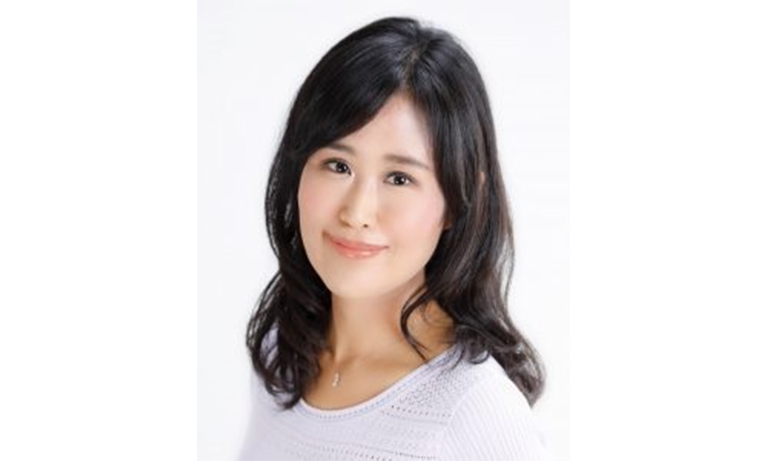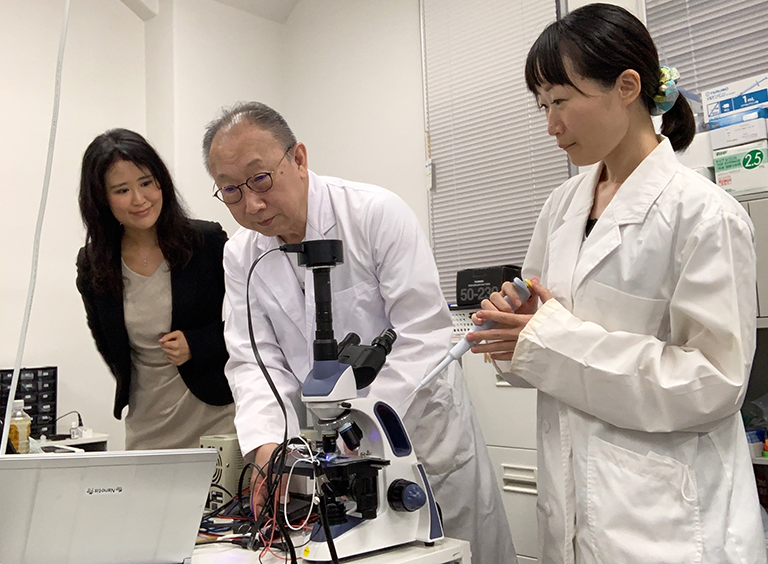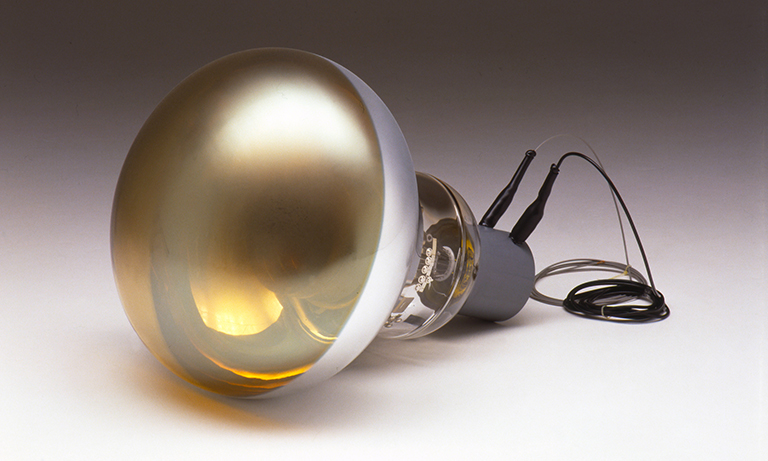Lisa Sakashita
CEO, Nanotis

A startup from the University of Tokyo aiming to realize "rapid testing with saliva, anywhere, by anyone."
Nanotis Corporation is a 2016 spin-out from the University of Tokyo that has been researching and developing next-generation testing devices for influenza and other infectious diseases. The company’s mission is: " To provide all people who combat diseases with rapid and accurate diagnoses.”
We interviewed Lisa Sakashita, CEO of Nanotis, which is GSCC’s first investment.
[Interview date: June 2021]
Lisa SAKASHITA
After graduating from department of Physics, the University of Tokyo with M. S. degree, she joined securities company and so on. She then became an executive at startup company for technology matching service.
Why did you start up a company?
Since my grandfather was a medical practitioner, I have always wanted to be involved in a business that contributes broadly to medical personnel for the health of people. After completing my master's degree, I felt that my mission in my life was to contribute to Science & Technology and Physics by utilizing my management experience at a securities company or startup company.
I was asked by researchers at the Tokyo University who I met by chance in 2016 to start a startup. I felt that I could contribute to both Medical and Science & Technology, which is my mission, and so I took the plunge and started this company. At the time of our founding, our mission was to provide prompt and accurate notice to all people fighting diseases. This is because diagnosis is the first step in fighting the disease in the medical field, and I felt that accurate diagnosis would lead to a great power for treatment and prevention of the spread of infectious diseases.
Why did you choose infectious diseases as your initial target, and why did you focus on influenza in particular?

Nanotis team members experimenting in a lab. at The Tokyo University
The initial diagnosis of respiratory infections is very important from the viewpoints of both treatment and prevention of the spread of infection, and we thought that the technology we aimed at would work most effectively as well as matching our mission. For example, Tamiflu, a flu medicine, needs to be administered within 48 hours after the onset of symptoms. The reason why we chose influenza as an infectious disease is because it has a certain number of patients every year, which is rare for an infectious disease, and it is a virus that certainly causes repeated pandemics in human history in the long term.
Furthermore, the diagnostic technology we are developing is a platform technology that can be applied to all respiratory infections, and we regard influenza as just a first target. In fact, COVID-19 has been raging around the world since the beginning of 2020, and as a result, the usefulness of the concept we envisioned, namely "Simple, quick, and inexpensive tests of saliva, regardless of the user's technique" has been recognized anew.
What is your vision after the flu?
As of June 2021, the COVID-19 vaccine is spreading in developed countries, but it is still a long way to go in developing countries, and mutant forms are appearing one after another. However, there are currently no simple test kits that can simultaneously test people for COVID-19 and influenza with saliva. The greatest advantage of our technology is that because of the wide range of concentrations that can be detected, we can simultaneously detect both the novel coronavirus, which has a high virus concentration in saliva, and influenza, which has a low virus concentration in saliva and requires collection of nasal swab.
In the past, new viruses spread throughout the world every 5 to 10 years, but now that awareness of the risk of infectious diseases has greatly changed worldwide, we believe that there is still a great demand for platform technology that can simultaneously detect new viruses that will appear in the future.
What are some of the challenges of running a startup?
Exactly it’s funding. Unfortunately, in Japan, the number of investors who invest in early-phase technology startups after understanding and evaluating the technology is still small. I think it is natural that unless you are an investor with specialized technical talent, you are unlikely to invest in a so-called "tech-driven" startup that starts with the development of elemental technology until you can evaluate the technology.
Why did you decide to get investment from Hamamatsu Photonics?
Hamamatsu Photonics, one of the world's leading companies in the field of photonics technology, praised our technology and I and the members were very honored. In addition, when I actually talked to them, I found that President Hiruma and all the members of the company had a strong passion for new innovations, and I felt very grateful for the opportunity of your participation as a shareholder. In fact, the fact that it was funded by Hamamatsu Photonics is a great advantage in the subsequent fundraising. I hope you will continue to invest aggressively as a valuable CVC that can evaluate and support technology startups.
Personally, there was a facility called Koshiba Hall in the 1st building of the Faculty of Science where I belonged to when I was a master's student at Tokyo University. At the entrance, there was a photomultiplier tube of the same size as the one used for Kamiokande, and I watched it every day when I went to school. So, Hamamatsu Photonics is an idol I have longed for since my school days.

20-inch photomultiplier tubes used in the Kamiokande project
In what ways do you think Hamamatsu Photonics has been able to support your company since its investment?
Miyazaki, our CTO, as well as myself, have had many opportunities to discuss with the members of the Electron Tube Division, which has been very stimulating. We are currently in the research and development phase, so it won't be soon, but in the future, we will consult with you about the design of detection devices that apply optical technology, for example.
What kind of support do you expect from Hamamatsu Photonics?
After establishing the principle of the technology and completing the prototype, as the next step, we would like you to consider a capital and business alliance based on a technical alliance, and eventually an M&A. The first priority is to make results so that we can receive a favorable evaluation. However, our company has some members who are well versed not only in technology but also in manufacturing and sales of medical devices. We would appreciate it if you could give us an opportunity to consult with you, including the establishment of a future system.
Thank you for being with us today. Please give a last message.
The ultimate goal of Nanotis is to deliver this technology to the field of infectious disease diagnosis as soon as possible, and as I have already said, we are developing this technology having partnerships with a business company and M & A in the future in mind. First of all, we will proceed with our research and development with the primary goal of getting our products highly evaluated by business companies, including your company. When the high evaluation is received, we hope to become a foothold for that company to develop and expand their medical devices, especially in the field of in vitro diagnostics. Also, We are planning to actively proceed with fundraising and recruitment, so please feel free to contact us through our website if you are interested. Thank you very much for your time today.
- Confirmation
-
It looks like you're in the . If this is not your location, please select the correct region or country below.
You're headed to Hamamatsu Photonics website for GB (English). If you want to view an other country's site, the optimized information will be provided by selecting options below.
In order to use this website comfortably, we use cookies. For cookie details please see our cookie policy.
- Cookie Policy
-
This website or its third-party tools use cookies, which are necessary to its functioning and required to achieve the purposes illustrated in this cookie policy. By closing the cookie warning banner, scrolling the page, clicking a link or continuing to browse otherwise, you agree to the use of cookies.
Hamamatsu uses cookies in order to enhance your experience on our website and ensure that our website functions.
You can visit this page at any time to learn more about cookies, get the most up to date information on how we use cookies and manage your cookie settings. We will not use cookies for any purpose other than the ones stated, but please note that we reserve the right to update our cookies.
1. What are cookies?
For modern websites to work according to visitor’s expectations, they need to collect certain basic information about visitors. To do this, a site will create small text files which are placed on visitor’s devices (computer or mobile) - these files are known as cookies when you access a website. Cookies are used in order to make websites function and work efficiently. Cookies are uniquely assigned to each visitor and can only be read by a web server in the domain that issued the cookie to the visitor. Cookies cannot be used to run programs or deliver viruses to a visitor’s device.
Cookies do various jobs which make the visitor’s experience of the internet much smoother and more interactive. For instance, cookies are used to remember the visitor’s preferences on sites they visit often, to remember language preference and to help navigate between pages more efficiently. Much, though not all, of the data collected is anonymous, though some of it is designed to detect browsing patterns and approximate geographical location to improve the visitor experience.
Certain type of cookies may require the data subject’s consent before storing them on the computer.
2. What are the different types of cookies?
This website uses two types of cookies:
- First party cookies. For our website, the first party cookies are controlled and maintained by Hamamatsu. No other parties have access to these cookies.
- Third party cookies. These cookies are implemented by organizations outside Hamamatsu. We do not have access to the data in these cookies, but we use these cookies to improve the overall website experience.
3. How do we use cookies?
This website uses cookies for following purposes:
- Certain cookies are necessary for our website to function. These are strictly necessary cookies and are required to enable website access, support navigation or provide relevant content. These cookies direct you to the correct region or country, and support security and ecommerce. Strictly necessary cookies also enforce your privacy preferences. Without these strictly necessary cookies, much of our website will not function.
- Analytics cookies are used to track website usage. This data enables us to improve our website usability, performance and website administration. In our analytics cookies, we do not store any personal identifying information.
- Functionality cookies. These are used to recognize you when you return to our website. This enables us to personalize our content for you, greet you by name and remember your preferences (for example, your choice of language or region).
- These cookies record your visit to our website, the pages you have visited and the links you have followed. We will use this information to make our website and the advertising displayed on it more relevant to your interests. We may also share this information with third parties for this purpose.
Cookies help us help you. Through the use of cookies, we learn what is important to our visitors and we develop and enhance website content and functionality to support your experience. Much of our website can be accessed if cookies are disabled, however certain website functions may not work. And, we believe your current and future visits will be enhanced if cookies are enabled.
4. Which cookies do we use?
There are two ways to manage cookie preferences.
- You can set your cookie preferences on your device or in your browser.
- You can set your cookie preferences at the website level.
If you don’t want to receive cookies, you can modify your browser so that it notifies you when cookies are sent to it or you can refuse cookies altogether. You can also delete cookies that have already been set.
If you wish to restrict or block web browser cookies which are set on your device then you can do this through your browser settings; the Help function within your browser should tell you how. Alternatively, you may wish to visit www.aboutcookies.org, which contains comprehensive information on how to do this on a wide variety of desktop browsers.
5. What are Internet tags and how do we use them with cookies?
Occasionally, we may use internet tags (also known as action tags, single-pixel GIFs, clear GIFs, invisible GIFs and 1-by-1 GIFs) at this site and may deploy these tags/cookies through a third-party advertising partner or a web analytical service partner which may be located and store the respective information (including your IP-address) in a foreign country. These tags/cookies are placed on both online advertisements that bring users to this site and on different pages of this site. We use this technology to measure the visitors' responses to our sites and the effectiveness of our advertising campaigns (including how many times a page is opened and which information is consulted) as well as to evaluate your use of this website. The third-party partner or the web analytical service partner may be able to collect data about visitors to our and other sites because of these internet tags/cookies, may compose reports regarding the website’s activity for us and may provide further services which are related to the use of the website and the internet. They may provide such information to other parties if there is a legal requirement that they do so, or if they hire the other parties to process information on their behalf.
If you would like more information about web tags and cookies associated with on-line advertising or to opt-out of third-party collection of this information, please visit the Network Advertising Initiative website http://www.networkadvertising.org.
6. Analytics and Advertisement Cookies
We use third-party cookies (such as Google Analytics) to track visitors on our website, to get reports about how visitors use the website and to inform, optimize and serve ads based on someone's past visits to our website.
You may opt-out of Google Analytics cookies by the websites provided by Google:
https://tools.google.com/dlpage/gaoptout?hl=en
As provided in this Privacy Policy (Article 5), you can learn more about opt-out cookies by the website provided by Network Advertising Initiative:
http://www.networkadvertising.org
We inform you that in such case you will not be able to wholly use all functions of our website.
Close